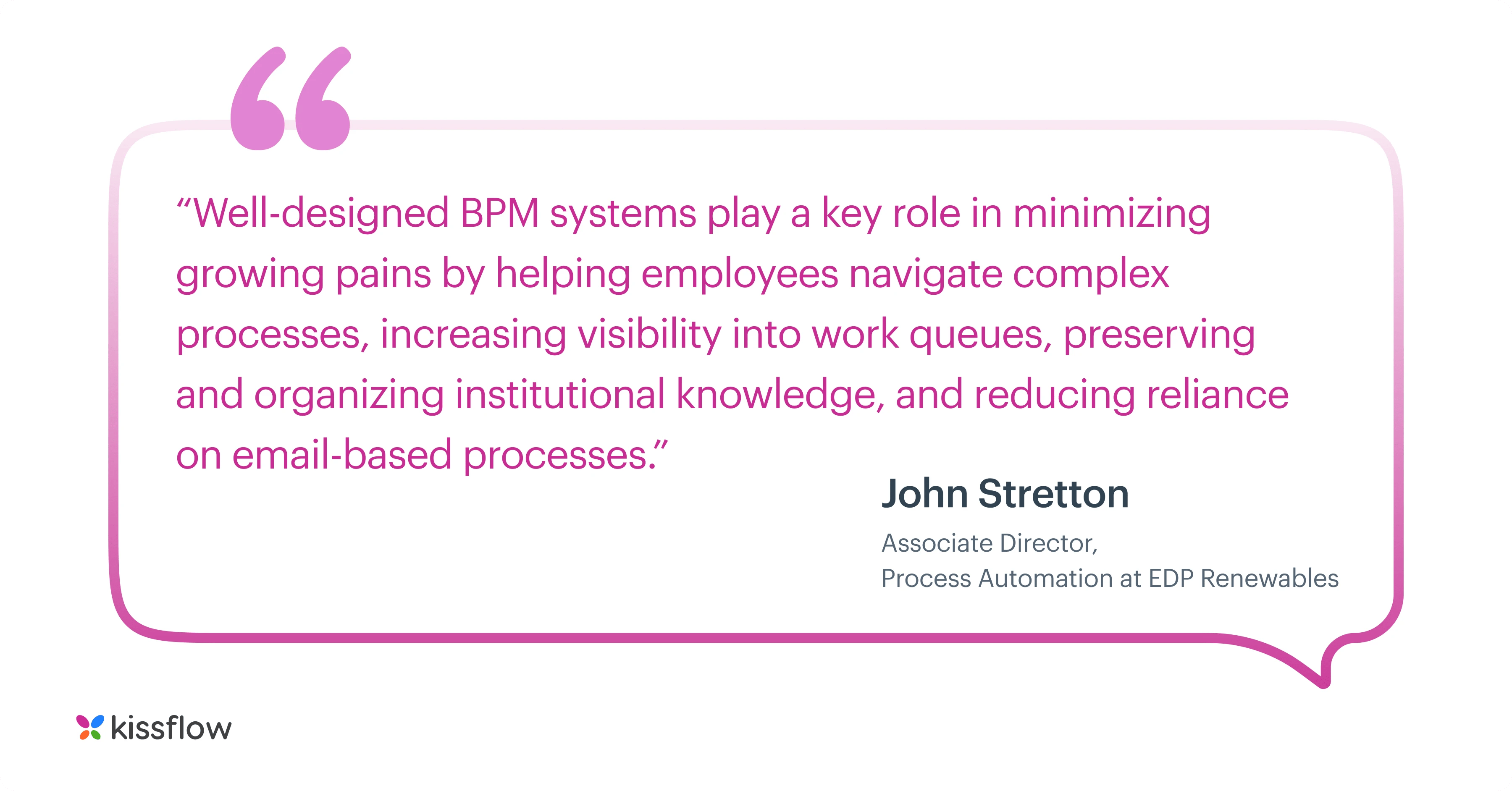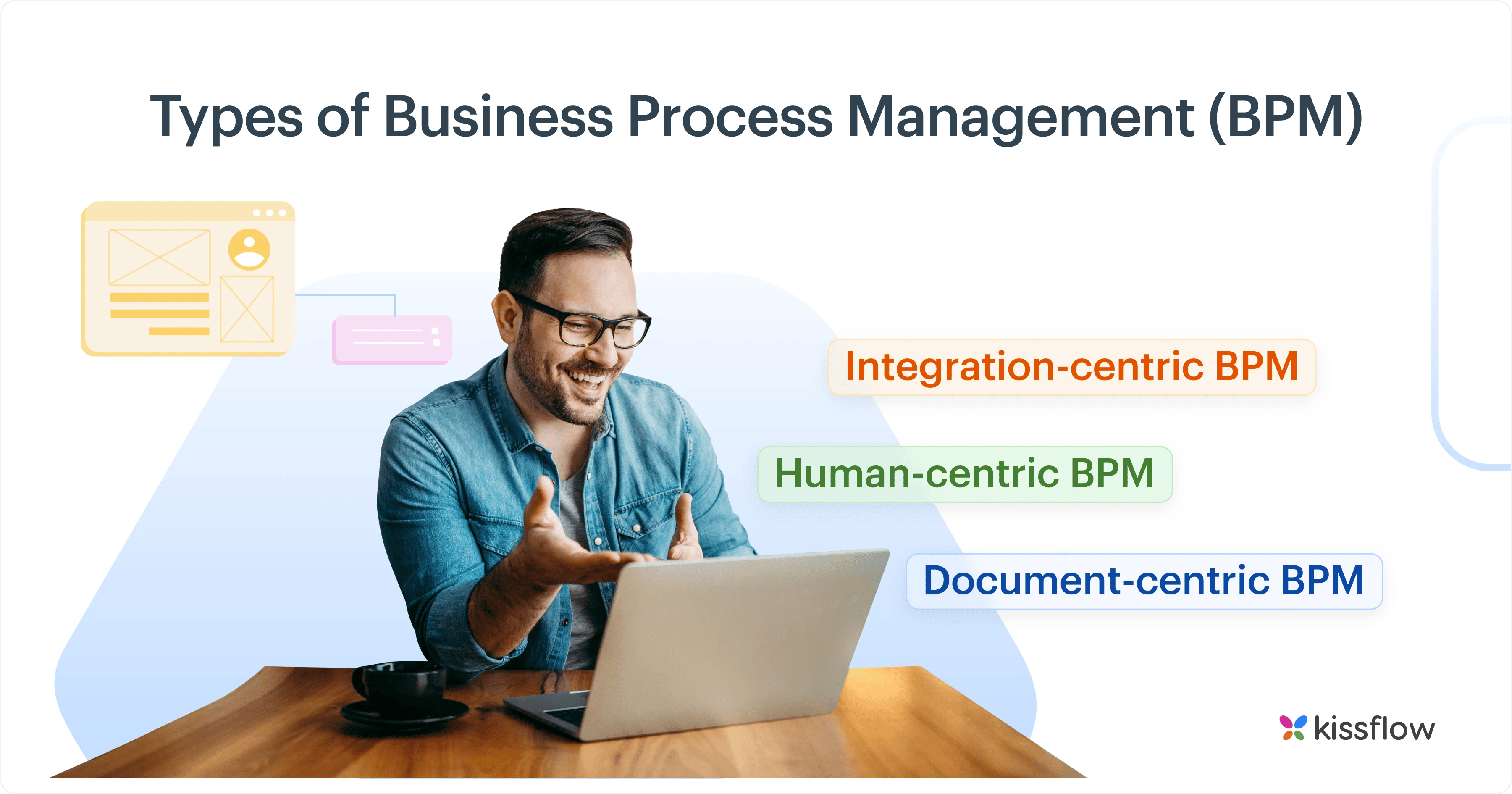
What is a Business Process Management strategy?
Business Process Management (BPM) strategy involves defining, designing, executing, monitoring, and optimizing business processes to increase efficiency, effectiveness, and agility.
Why is BPM important?
Business process management helps organizations improve efficiency, productivity, and agility. By streamlining processes and eliminating bottlenecks, organizations can reduce costs and improve the quality of their products and services. Additionally, BPM helps organizations adapt quickly to new technologies and business models, making them more responsive to changing customer and market needs.
Steps of the BPM Lifecycle
Step 1: Design
Most processes include a form to collect data and a workflow to process it. Build your form and identify who will own each task in the workflow. This is also called business process mapping.
Step 2: Model
Represent the process in a visual layout. Fix details like deadlines and conditions to give a clear idea of the sequence of events and the flow of data through the process.
Step 3: Execute
Execute the process by testing it live with a small group first and then opening it up to all users. Make sure you restrict access to sensitive information.
Step 4: Monitor
Keep an eye on the process as it runs through the workflow. Use the right metrics to identify progress, measure efficiency, and locate process bottlenecks to ensure process monitoring is done effectively.
Step 5: Optimize
As you analyze, notice any changes that need to be done to your form or workflow to make them more efficient. Consider business process improvement steps. Read more: An Amateur’s Guide to the BPM Life Cycle
Best Practices in Business Process Management
Several best practices have emerged over time to assist in BPM, which is a complex process improvement strategy. Organizations can follow them to manage their business processes effectively:
-
Define clear goals and objectives
It is important to understand the desired outcomes of a business process and to ensure that the process is aligned with the organization’s overall goals. -
Involve stakeholders
Involving key stakeholders in the design and management of business processes can help ensure buy-in and support for process improvements. -
Document and analyze processes
Detailed documentation of business processes can help organizations understand how they work, identify areas for improvement, and track progress over time. -
Use process modeling techniques
Process modeling techniques like flowcharts and BPMN can help organizations visualize and understand their processes and identify potential bottlenecks and inefficiencies. -
Continuously monitor and measure process performance
Organizations should regularly monitor and measure the performance of their business processes and use this data to identify and address any issues or problems. -
Use technology to automate and optimize processes
Automation and technology can help organizations streamline and optimize their processes, reducing the need for manual labor and improving efficiency. -
Foster a culture of continuous improvement
Encouraging a culture of continuous improvement can help organizations stay agile and adaptable and ensure that their processes are continuously evolving to meet changing needs.
What are the benefits of incorporating Business Process Management?

Here are some of the primary benefits of using BPM in your business:
- Gain control of chaotic and unwieldy processes
- Create, map, analyze, and improve business processes
- Run everyday operations more efficiently
- Realize bigger organizational goals
- Move toward digital transformation
- Improve and optimize tangled operations
- Closely track individual items as they move through a workflow
What are the types of Business Process Management?

BPM systems can be categorized based on the purpose they serve. Here are the three types of business process management:
-
Integration-centric BPM
This type of business process management system handles processes that primarily jump between your existing systems (e.g., HRMS, CRM, ERP) without much human involvement. -
Human-centric BPM
Human-centric BPM is for those processes that are primarily executed by humans. These often have a lot of approvals and tasks performed by individuals. -
Document-centric BPM
These business process management solutions are required when a document (e.g., a contract or agreement) is at the heart of the process.
Most business process management systems will be able to incorporate elements of each of these, but each one will usually have one specialty.
Business Process Management examples
HR
Have you ever felt your organization’s onboarding process is too complex and chaotic? Applying business process management helps you automate your HR processes end-to-end, thereby cutting down on cost, time, and paper forms. Examples include approving employee timesheets faster and onboarding new hires without hassles.
Sales
In most organizations, the sales team spends a significant amount of time coordinating with the Accounts Receivable (AR) team to get sales invoices approved. Business process management automates the invoice approval process, thereby eliminating the chances of manual errors and back-and-forth clarifications. Examples include shortening sales cycle workflows and being on time with quotes and invoices.
Finance
A finance team is bombarded with paper forms and emails every day since anything that involves money has to go through them. Business process management software helps them manage all of this, for example, with one-click approvals for travel requests and customizing workflows for unique scenarios.
Features every Business Process Management tool should have
Now that you know why exactly a BPM system is necessary, here’s a list of the features a good business process management system should have.
- Visual process diagramming tool
- Drag-and-drop form designer
- Role-based access control
- Mobile support
- Lead management solution
- Powerful administrator features
- Single sign-on (SSO)
- Integration with existing software systems
- Reports and analytics
- Performance for large user bases
- Process performance metrics
Read this article for a detailed explanation of the above features of a good business process management system.
Is BPM like task or project Management?
Business process management is neither task management (which focuses on individual tasks) nor project management (which handles one-time or unpredictable flows).
Task management handles or organizes a set of activities arising from a project, while project management software is used when these projects are well-organized. On the other hand, business process management is focused more on repetitive and ongoing processes that follow a predictable pattern or process management.
Try Kissflow to manage your business processes
Ready to take your Business Process Management (BPM) up a notch? Give Kissflow a spin! It’s a user-friendly, low-code platform that makes managing business processes a breeze. Whether in IT, finance, or HR, Kissflow has got you covered.
Create your apps, streamline workflows, and boost efficiency. Plus, with its mobile compatibility, you can manage your work anytime, anywhere. Try Kissflow today and propel your business toward success!
